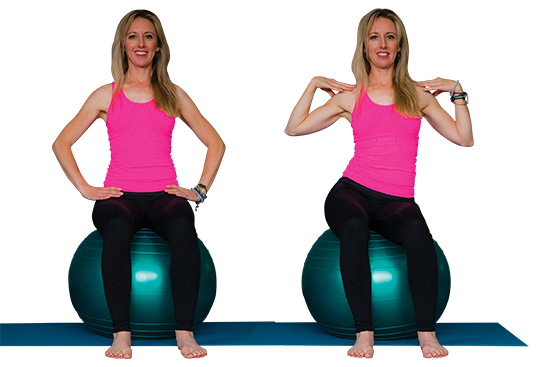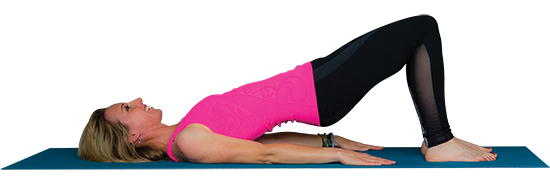 Now that we’ve found our core, we are going to look at the mobility of the back and pelvis.
Now that we’ve found our core, we are going to look at the mobility of the back and pelvis.
These exercises will help you to locate any blockages in the muscles of the pelvis and back. They also help to disassociate the upper and lower body. This is beneficial because the pelvis, in part, “belongs” to the horse while the shoulder girdle (top half of the torso) “belongs” to the rider. The pelvis has to be stable to support the backbone but also have controlled mobility to move with the horse in a three dimensional manner. If not, the risk is that the flow of movement through the horse’s back is blocked and this would lead to a stiff and possibly hollow back in both horse and rider. The rider’s back also needs to be able to guide the horse through the extended as well as collected paces. The lower body of the rider should be constantly making small adjustments to remain in balance with the horse. This allows the rider’s upper body to “float” effortlessly on top.
Pelvic mobility on the ball:
It is important to do these exercises in a slow and controlled fashion so as not to smooth over the blockages by using momentum. The body needs time to compute where the blockages are and what muscles it needs to either stretch or contract to eliminate the imbalance. We are looking for evenness in all directions.
Set Up:
– Find neutral spine, sitting on ball, feet hip joint width apart
– Switch off your outer muscles, relaxing your legs and arms.
– On an in breath, switch on your core by imagining the low abs melting inwards towards your spine and lifting up gently through the pelvic floor. When breathing, imagine filling up your lungs completely, including the sides and back, not just the front. The shoulders remain relaxed and still.
Instruction of move: Pelvic tilts back and forward: Be careful not to tilt
the pelvis too much (increasing the hollow in the lower back excessively) and
put pressure on the vertebrae of the lower back. This is why it is very important to keep the core well switched on.
Pelvic tilts sideways: You want to think of keeping your shoulders still. Don’t be like a weeble doll with your shoulders swaying all over the place! Think of bringing your ribs and hip closer together on the side you are compressing. Keep the ribs over your hips and not popping out one side or the other.
Hip Circles: Describe a big circle with your hips around your shoulders, which remain still and centred. Check for any areas that feel blocked or where you want to “cut corners” and lose the correct circumference of the circle.
Watch out for:
– Shoulders moving or hunching instead of the waist working
– Holding breath
– Movements not symmetrical
– Losing length through the body and collapsing your ribs
Shoulder Bridge
This is a wonderful exercise to remove blockages in the spine. If our back is “locked” in any part, the movement of the horse will not be absorbed by the natural curvature of the spine and the muscles supporting it. It also opens the front of the hips to help us achieve a good “dressage position”, teaches us to relax the shoulders and disassociates them from the pelvis and torso and has the added benefit of massaging the central nervous system which helps balance us mentally as well as physically.
Set up:
– Lie on your back, knees bent and neutral spine
– Switch off the big muscles of the legs and engage the core

Instruction of move:
– Start the movement with gluteus maximus and peel your vertebrae off the floor one at a time until your body is in a diagonal line. (Does this feel familiar? You’re in a dressage position, connecting the front of the body and opening the front of your hips!
– Roll back down to start position one vertebrae at a time
Watch out for:
– Non sequential movement in the spine/flat back
– Tilting pelvis that favours one side and doesn’t remain straight
– Shoulders hunching
– Doming tummy and not keeping the front of the body connected.

It’s so exciting to see Pilates teachers helping riders. So often horses are unfairly blamed when in fact it’s the rider’s biomechanics causing the issue. Great article.